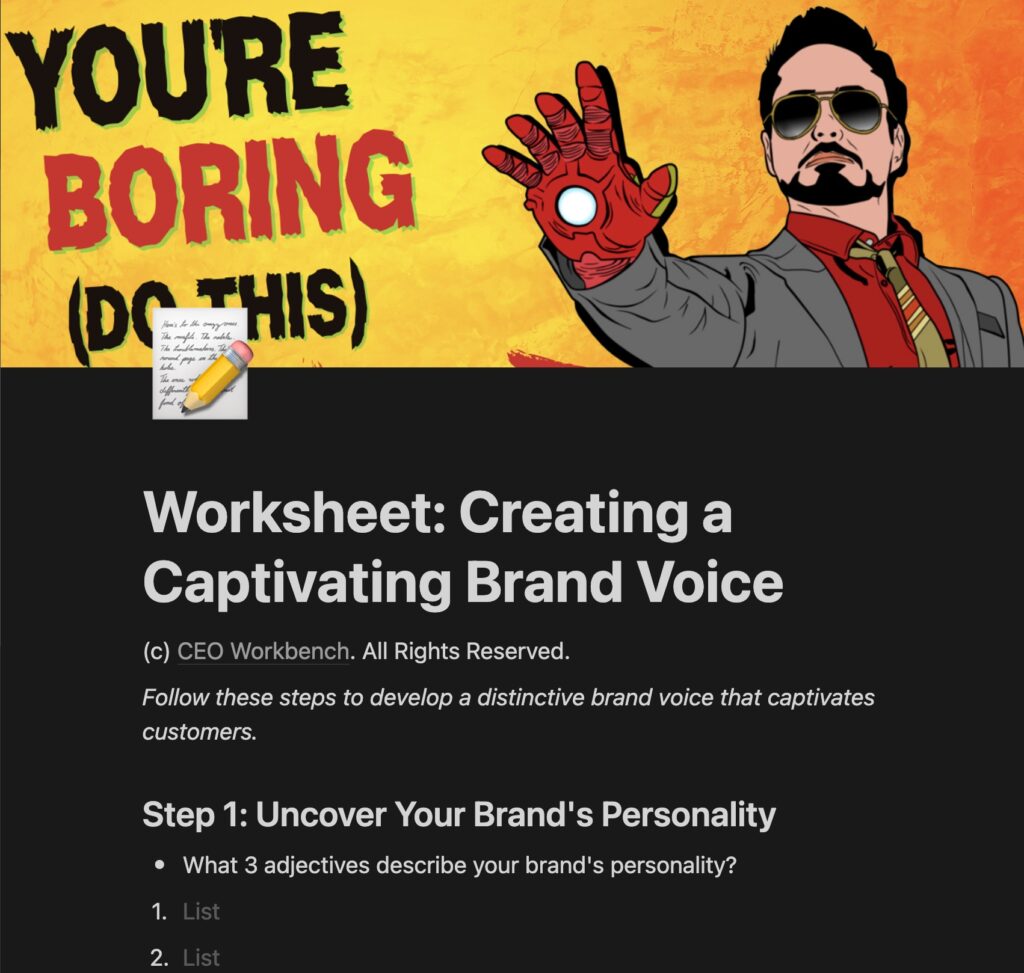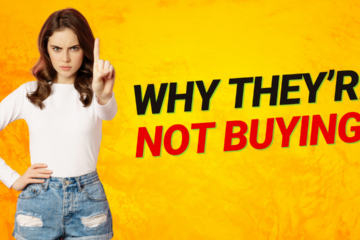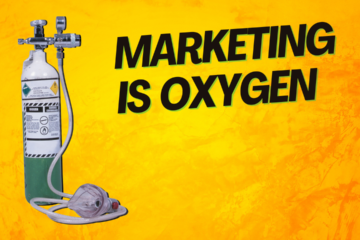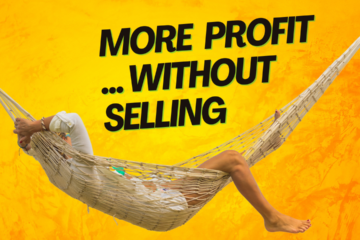I was completely failing at my first business.
I was yet another small firm saying “big firm quality at small firm prices” … and prospects weren’t biting. Why?
It was BORING.
Here’s how I fixed it:
Brands walk a fine line between communicating key information and fading into the background with boredom.
You need prospects to remember. Building a unique voice with a unique message makes your brand pop.
So how do you give your brand a voice that’s bold, memorable, and distinct? It’s not enough to just say you’re “different” or “innovative”. Or worst of all “just like the big guys but better prices” (ask me how I know).
You need a systematic process to uncover what makes you truly one-of-a-kind.
Think of your brand as an eccentric celebrity or superhero.
What makes someone like Lady Gaga stand out isn’t just her music – it’s her entire persona. From her wardrobe to her opinions, she’s unlike anyone else. Your brand needs that same X-factor.
Here’s a four-step process to build your brand’s captivating voice:
Step 1: Discover Your Brand’s True Personality
Start by asking: if my brand was an actual person, what would they be like?
Forget what you want people to think – what do they actually think after interacting with you?
Make a list of adjectives that describe your brand’s personality. Be brutally honest. Don’t hold back – really get to the core of how your brand makes people feel. Eclectic? Serious? Down-to-earth? Elitist? Trusted? Quirky? Professional?
The answer could be “nothing special” – which isn’t good, but at least now you know so we can fix it.
Step 2: Pick Your Celebrity Brand Doppelgänger
Now comes the fun part – which celebrity or superhero is most like your brand? Finding your brand’s celebrity doppelgänger (alter ego) creates a shorthand for what your brand embodies.
For example, if your brand is authoritative yet playful, you’re more Tony Stark than Captain America. If you’re an innovative pioneer in your industry, think Nikola Tesla, not Thomas Edison. If you’re aiming for bold yet glamorous, go for Lady Gaga over Celine Dion.
Making these connections crystallizes what your brand’s persona should be.
It also serves as a North Star when you’re creating content or making business decisions – “what would [my celebrity doppelgänger] do in this situation?”
Step 3: Establish Your Brand’s Core Contrarian Beliefs
Great brands all have something in common: a point of view that challenges the status quo. What common industry beliefs does your brand reject? How does your brand see the world differently than competitors?
For example, my marketing agency worked with law firms – and we believed that lawyer marketing should be based on bringing out the real people behind the stuffy suits. Don’t look fancy, look like a real person – which is the opposite of most legal marketing (and works better).
My eCommerce company is also doing it differently – our purpose is helping rescue animals before taking any profit. Who do you think customers are going to buy from – the company that’s making a difference, or the one hell bent on lining their pockets?
Clearly establishing your contrarian point of view is crucial. It’s not enough to say you “think differently,” are on the cutting edge, or have expertise – you need to specifically call out what you’re rebelling against and why.
For example, Tony Stark believes superheroes shouldn’t be anonymous vigilantes. Tesla believes gasoline-powered cars are primitive dinosaurs awaiting extinction. Lady Gaga believes artists must push boundaries through relentless reinvention.
Make a list of 3-5 core contrarian beliefs that will form your brand’s manifesto. What change does your brand want to inspire in the world?
Step 4: Tell Your Brand’s Captivating Origin Story
Every superhero has an origin story explaining their powers and motivations (e.g. Batman sees his parents murdered). Your brand’s origin story is a key touchpoint to connect with customers emotionally.
Does your brand fill an unmet need the founders once experienced? Were you an underdog disrupting a stagnant industry? Did you oversecome unique challenges to get where you are?
Craft your brand origin story to highlight what makes you singularly passionate about your mission.
And remember – origins can evolve over time. Tesla’s origin today is about accelerating sustainable energy, even though they started just aiming to build an electric sports car.
Bringing It All Together
With these four steps, you’ve uncovered your brand’s true persona, celebrity alter ego, central beliefs, and backstory.
Now it’s time to translate these insights into your brand voice. Here are some ways to do that:
- Content style: Embrace your brand’s personality in your content – be playful, authoritative, or outrageous as fits your persona.
- Messaging: Put your contrarian beliefs front and center in messaging to show you’re unlike competitors
- Visuals: Bring your brand persona to life with imagery that conjures your celebrity doppelgänger.
- Storytelling: Share your origin when introducing your brand – it’s part of what makes you exceptional.
- Values: Let your brand beliefs shape your culture and how you make business decisions.
Remember when my first business was failing? This is exactly what I did. And that took it from $70k/year to seven figures.
With this formula, your brand can develop a captivating voice that wows customers and sticks in their minds. The more you share what makes you genuinely one-of-a-kind, the more that authenticity will come through.
Embrace your brand’s kooky inner self. The success you’ll have will be anything but boring.
Want a shortcut do doing this? I’ve got a free worksheet for you at the CEO Workbench.



